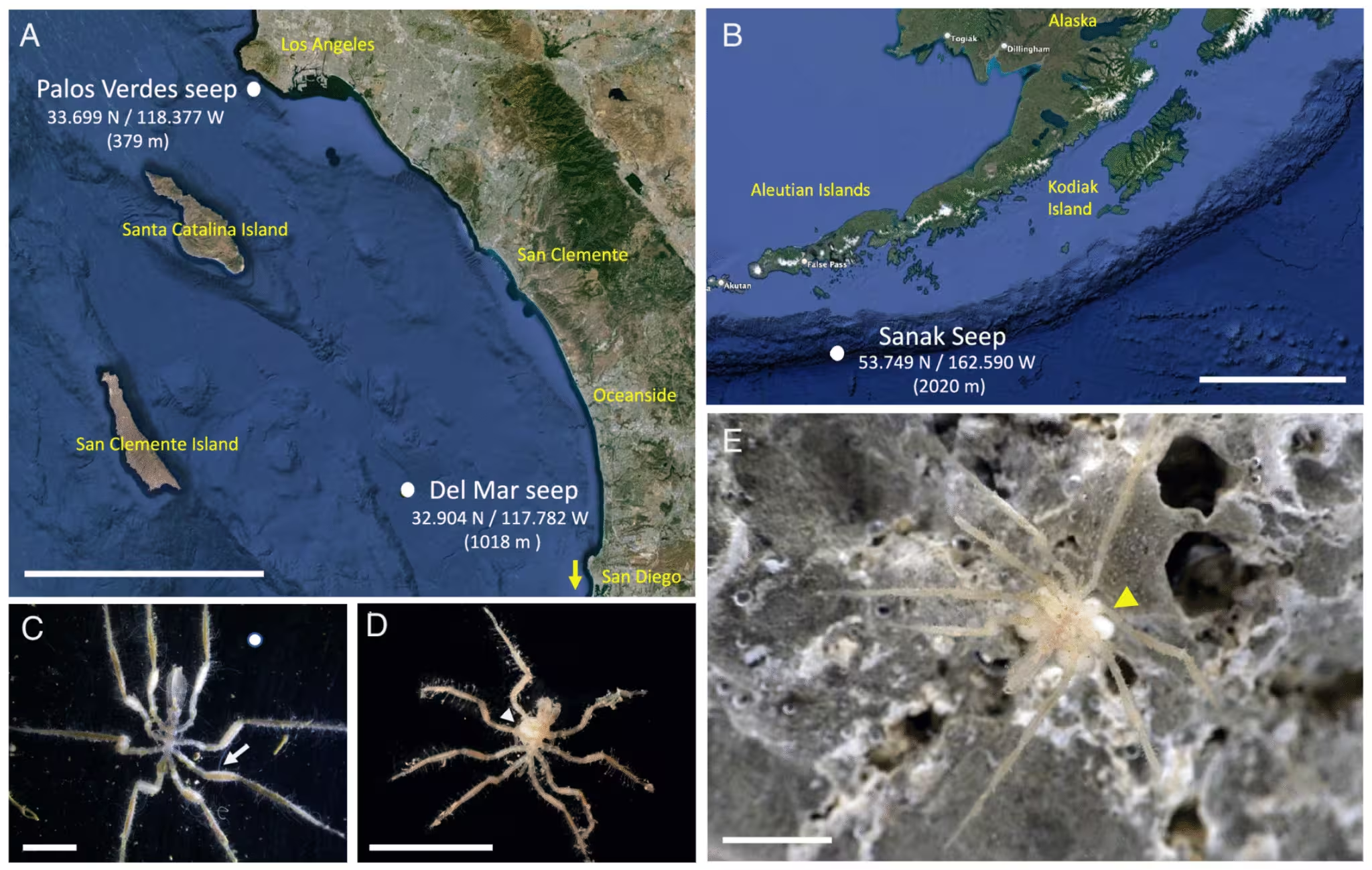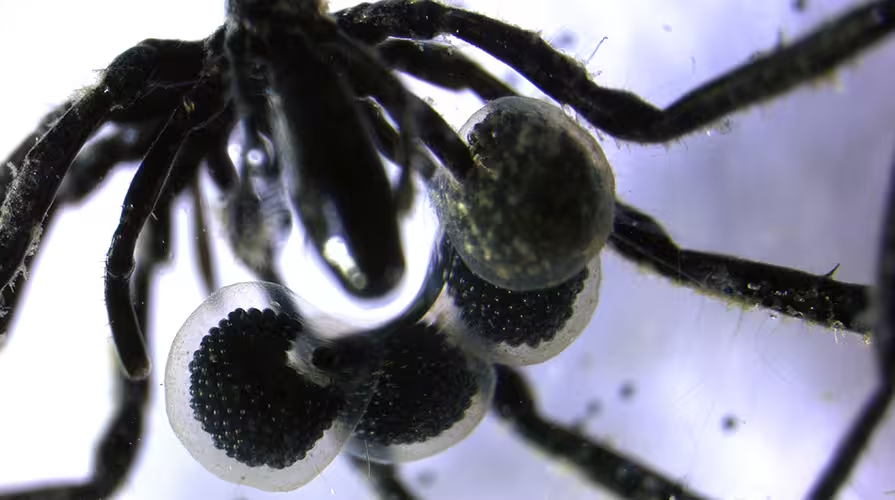4 Minutes
Unveiling a New Deep-Sea Mystery: Sea 'Spiders' and Their Microbial Gardens
A groundbreaking marine biology study has revealed the discovery of three remarkable new species of deep-sea "spiders," each forming a highly unusual partnership with methane-consuming bacteria. Contrary to their common name, these enigmatic animals are not true spiders or even arachnids, but are marine arthropods renowned for their spindly legs radiating from compact bodies. The find offers unprecedented insight into the diverse survival strategies evolved by life in Earth's most inaccessible and sunless environments.
Scientific Context: Life Beyond Sunlight
Unlike the majority of Earth's creatures that ultimately rely on photosynthesis for energy, deep-sea organisms must derive their sustenance from sources independent of sunlight. Ocean depths exceeding 1,000 meters (about 3,300 feet) remain in perpetual darkness, making traditional food webs impossible. Instead, many deep-sea species thrive near areas known as methane seeps — geologic vents where the potent greenhouse gas methane leaks from the seafloor. These ecosystems host unique symbiotic relationships formed by marine animals and specialized microorganisms capable of harnessing chemical energy.
Discovery and Exploration: Tracing the Methane Seeps
The newly identified species, all classified under the genus Sericosura, were discovered by a research team led by Bianca Dal Bó from Occidental College in the United States. The exploration involved remotely operated vehicle (ROV) expeditions in 2021 and 2023 along the Southern California coastline and the waters near Alaska. Specimens were collected at the Palos Verdes methane seep (397 meters deep), the Del Mar seep (1,018 meters deep), and the remote Sanak seep off Alaska, plunging to a depth of 2,020 meters.
Upon examination, the research team found all three sea spider species densely coated with communities of three distinct bacteria. These microbes are known as methane- and methanol-oxidizers, capable of converting methane—a potent greenhouse gas—and methanol into essential carbon compounds and energy. The prevalence of these bacteria implies a direct connection to the sea spiders' survival.

Experimental Insights: Decoding the Symbiotic Relationship
To determine the extent of this extraordinary symbiosis, laboratory experiments exposed sea spiders to methane and carbon dioxide molecules tagged with specific carbon isotopes. The results were illuminating: virtually all bacteria living on the sea spiders' exoskeletons assimilated carbon from methane or methanol rather than carbon dioxide. After only five days, the isotopic label appeared within the digestive tissues of the sea spiders—clear evidence that the arthropods consume the methane-oxidizing bacteria growing on their own bodies.
This direct farming of methane-eating microbes is a rare survival strategy among animals. Unlike other creatures in methane-rich lake ecosystems, which might rely on complex food webs, these sea spiders cultivate their food source as a living bacterial 'garden' attached to their exoskeletons and never venture far from their methane-rich habitats.
Comparative Biology: Symbiosis Across Deep-Sea Animals
Methane-driven symbioses are observed in other deep-sea organisms, such as sponges, sabellid worms, beard worms, and certain species of mussels and hydrothermal vent crabs. However, the discovery that Sericosura sea spiders harbor all three primary families of methane- and methanol-oxidizing bacteria is unique. Previous studies had not identified any single animal hosting this full array of methanotrophic symbionts.
Moreover, despite the wide geographic gap between California and Alaska, the bacterial communities found on these sea spiders functioned identically at all seep sites. This remarkable consistency hints at a deeply conserved and efficient survival mechanism.

Transmission and Life Cycle: Inheriting Microbial Allies
Researchers also uncovered evidence for the vertical transmission of these beneficial bacteria. Male sea spiders carry and brood egg clutches for up to 20 days, and even unhatched eggs harbored methane-loving microbes. Once hatched, juvenile sea spiders have immediate access to their microbial food source—a vital adaptation given the hostile, oligotrophic conditions of deep-sea methane seeps. Strikingly, half of the Del Mar seep specimens were egg-carrying males, suggesting this symbiotic strategy might boost reproductive success in these extreme conditions.
Conclusion
The discovery of deep-sea ‘spiders’ cultivating methane-eating bacteria on their bodies sets a new benchmark in our understanding of symbiotic evolution in extreme environments. By directly farming their food, these Sericosura species bypass the limitations of photosynthetic food chains, relying on a unique, tripartite microbial alliance to survive where sunlight cannot penetrate. This research not only expands our knowledge of deep-sea ecology but also underscores planet Earth's remarkable diversity of life and its ingenious adaptations for survival under even the harshest conditions. As scientists continue to probe the ocean’s depths, such findings promise to reshape our comprehension of life’s resilience and inventiveness.
Source: doi



Comments